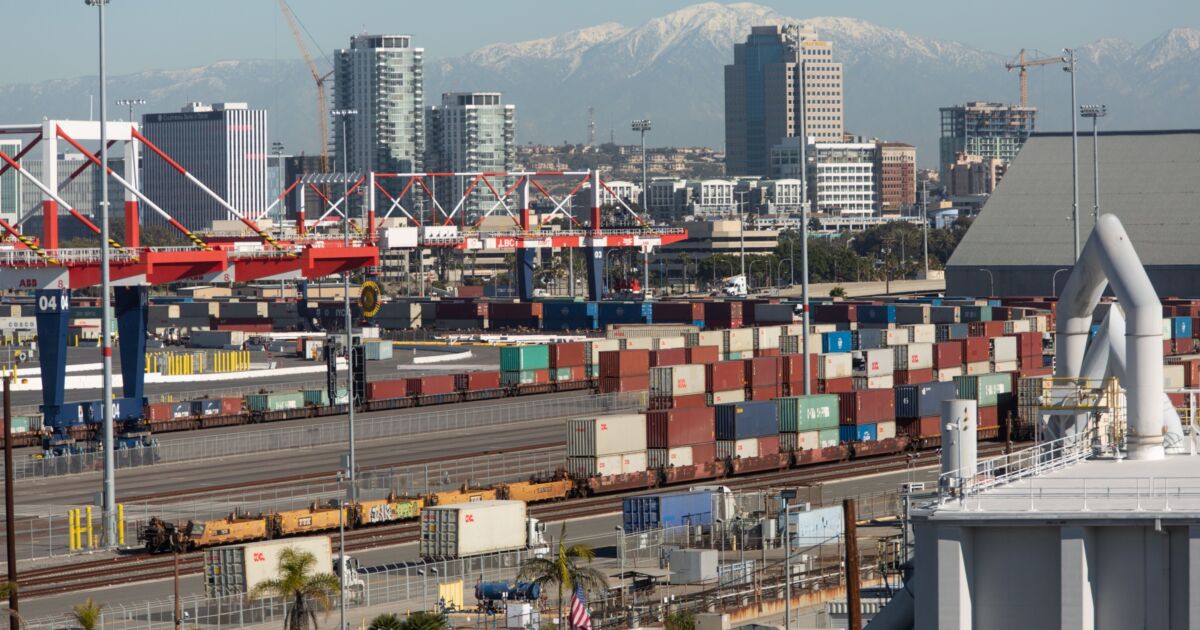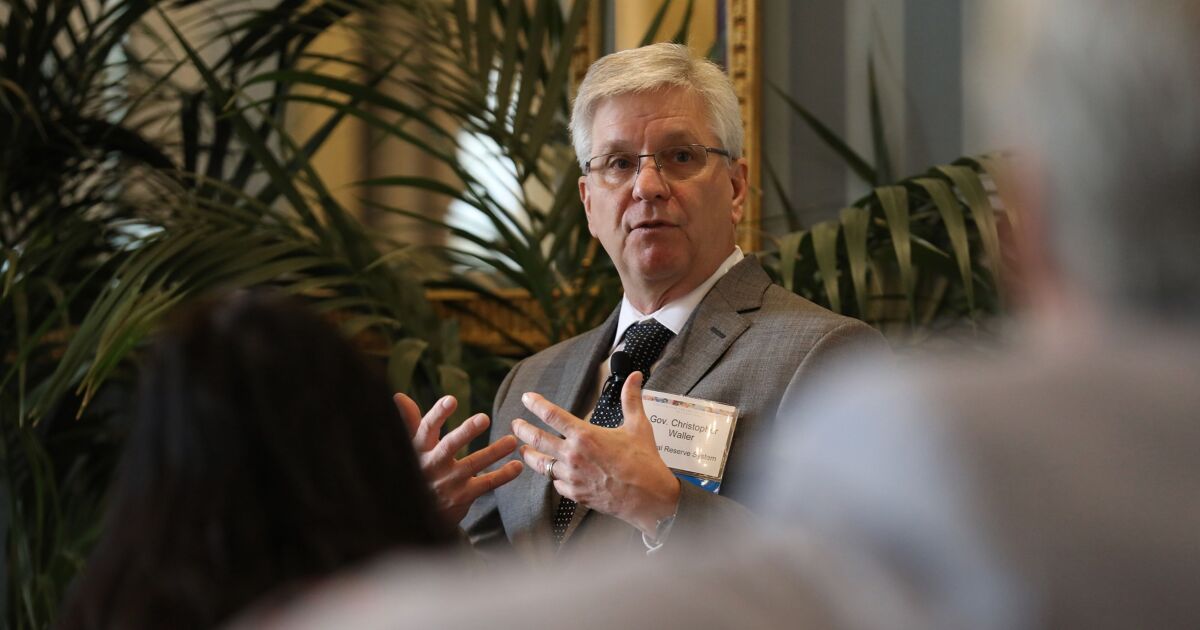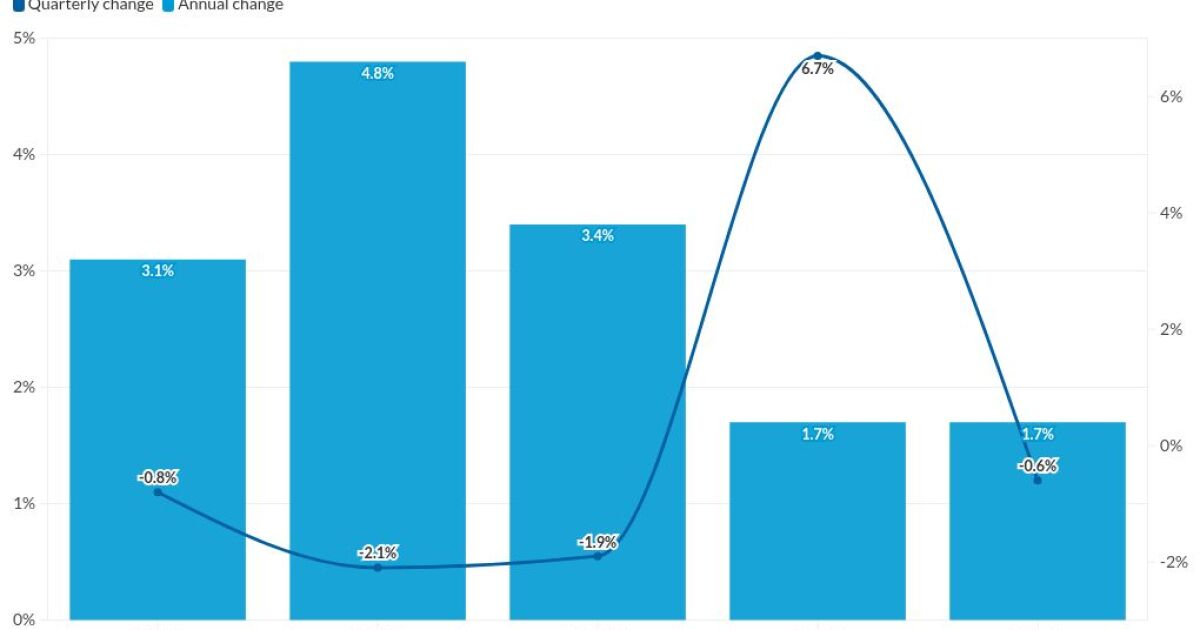
The U.S. economy unexpectedly shrank last quarter for the first time since 2020 as the trade deficit ballooned, adding to political headaches for President Joe Biden but unlikely to sway the Federal Reserve from hiking interest rates aggressively to combat inflation.
Gross domestic product fell at a 1.4% annualized rate as surging imports and softer inventory growth more than offset otherwise solid consumer and business demand, the Commerce Department’s preliminary estimate showed Thursday. The print was below all but one estimate in a Bloomberg survey. The median projection was for a 1% increase.
Together, trade and inventories subtracted about 4 percentage points from headline growth. Government spending shrank, also weighing on GDP. But underlying details show still-solid household demand and business investment.
Real final sales to domestic purchasers, a measure of underlying demand that strips out the trade and inventories components, increased an annualized 2.6%, an improvement from the 1.7% pace in the fourth quarter.
Against a backdrop of quicker inflation and solid spending, Fed monetary policy is still geared for a half-point rate hike next week. Nonetheless, officials need to balance tighter policy with risks to demand.
The economy faces other potential headwinds that include knock-on effects from Russia’s war in Ukraine. Growth prospects in Europe are deteriorating, some raw materials are in short supply and the Chinese government’s severe pandemic-related lockdown measures are leaving supply chains in disarray.
The S&P 500 opened higher, the yield on the 10-year Treasury note pared gains and the dollar remained stronger.
“With strong growth of consumer spending, business investment and employment in the first quarter, the U.S. economy was not in a recession at the beginning of the year,” said Bill Adams, chief economist at Comerica Bank. “Growth should resume in the second quarter as the trade deficit and inventories become smaller headwinds.”
Consumer Spending
The Commerce Department’s data showed personal consumption, the biggest part of the economy, rose an annualized 2.7% in the first quarter, compared with 2.5% at the end of 2021. Services spending added 1.86 percentage points to GDP, while goods spending stagnated, reflecting changing consumer behavior.
At the start of this year, spending surged as Covid-19 cases declined. As the quarter dragged on, high inflation began to take a bite out of purchasing power. Nonetheless, many corporate executives on recent earnings calls touted the durability of the American consumer.
Looking forward, rapid inflation and dwindling fiscal support point to more moderate growth in outlays for the remainder of the year. Furthermore, higher interest rates may at some point prompt companies to trim capital expenditures budgets.
Other potential headwinds for the U.S. economy include knock-on effects from Russia’s war in Ukraine that include deteriorating growth prospects in Europe, raw-materials shortages and persistent supply-chain hiccups. Trade flows are also at risk from the Chinese government’s severe pandemic-related lockdown measures that have stymied activity at some of the nation’s ports.
Residential investment rose at a 2.1% pace, as builders began making some headway on backlogged projects. While underlying housing demand remains strong, a rapid rise in mortgage rates and record-high home prices are weighing on affordability and could begin weighing on homebuilding later this year.
The report showed trade subtracted 3.2 percentage points from GDP in the first quarter, reflecting a surge in imports and a drop in exports. The U.S. economy has recovered more quickly from than pandemic than many countries abroad, bolstering demand for foreign-made goods.
The change in inventories subtracted 0.84 percentage point from the headline figure during the January-March period. In the fourth quarter, they added a whopping 5.3 points. Looking ahead, businesses will continue to replenish their inventories in an effort to restock following the robust merchandise demand seen in 2021.
The personal consumption expenditures price index excluding food and energy, an inflation measure followed closely by Fed officials, grew an annualized 5.2% last quarter. Monthly PCE data for April will be released on Friday.
A separate report Thursday showed applications for state unemployment insurance fell slightly last week, consistent with an extremely tight labor market.



